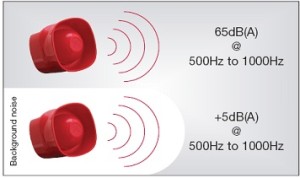SECURITY SYSTEMS SOLUTIONS
-
 Access Control
Access Control
-
 Asset Tracking
Asset Tracking
-
 Automatic Door
Automatic Door
-
 Baggage Scanner
Baggage Scanner
-
 Bell Timer
Bell Timer
-
 Boom Barrier
Boom Barrier
-
 BMS
BMS
-
 Burglar Alarm
Burglar Alarm
-
 Canteen Management
Canteen Management
-
 CCTV ANPR
CCTV ANPR
-
 CCTV People Counting
CCTV People Counting
-
 CCTV Surveillance
CCTV Surveillance
-
 CCTV Video Analytics
CCTV Video Analytics
-
 Central Vacuum Cleaner
Central Vacuum Cleaner
-
 DFMD
DFMD
-
 Electric Fence
Electric Fence
-
 EAS
EAS
-
 Fire Alarm
Fire Alarm
-
 Fire Hydrant
Fire Hydrant
-
 Fire Suppression
Fire Suppression
-
 Flap Barrier
Flap Barrier
-
 Garage Door
Garage Door
-
 Gas Detector
Gas Detector
-
 Gate Automation
Gate Automation
-
 GSM Communicator
GSM Communicator
-
 Guard Monitoring
Guard Monitoring
-
 HHMD
HHMD
-
 Home Automation
Home Automation
-
 Home Theatre
Home Theatre
-
 Hotel Lock
Hotel Lock
-
 ID Cards
ID Cards
-
 Lighting Automation
Lighting Automation
-
 Network & Communication
Network & Communication
-
 Nurse Calling System
Nurse Calling System
-
 Occupancy Sensor
Occupancy Sensor
-
 PA Systems
PA Systems
-
 Payroll
Payroll
-
 Road Blocker
Road Blocker
-
 Smart Lock
Smart Lock
-
 Time Attendance
Time Attendance
-
 Tripod Turnstile
Tripod Turnstile
-
 UVSS
UVSS
-
 Vehicle Tracking
Vehicle Tracking
-
 Video Door Phone
Video Door Phone
-
 Parking Management System
Parking Management System
-
 Visitor Management
Visitor Management
-
 Wireless Communication
Wireless Communication
Fire Alarm Siren
A fire alarm siren is a loud, audible device that is used to alert people in the event of a fire. It is typically installed in buildings and other structures to warn occupants of the need to evacuate or take other emergency actions in the event of a fire.
Fire alarm sirens are typically activated by a fire alarm control panel, which receives signals from fire detectors or other fire alarm system components. Some fire alarm sirens are also connected to a public address system, which can be used to give verbal instructions and provide other information to occupants of the building.
Audible Alarm Signals Audible fire alarm signals must provide a clear warning of a fire to all those for whom the signal is intended. For category M and L systems, this would normally imply all occupants of a building, however in some sites this may not apply, for example in hospitals or rest homes, residents might need assistance to evacuate, in which case it may be sufficient to alert staff.
The general requirement for the volume of audible alarm signals is that they should provide a Sound Pressure Level (SPL) of at least 65dB(A), but not more than 120dB(A) throughout all accessible areas of the building.
Exceptions to this general rule are as follows:
- In stairways, the SPL may be reduced to 60dB(A)
- Enclosures less than 60m² may be reduced to 60dB(A)
- There is no minimum for enclosed areas less than 1 m²
- At specific points of limited extent, the SPL may be reduced to 60dB(A)
Where a continuous background noise level greater the 60dB(A) is present the fire alarm signal should be 5dB above the ambient, but not greater than 120dB(A).
Where the alarm is intended to wake people, an SPL of 75dB(A) is required at the bed head. Generally, this will require a sounder to be placed within the room.
Where it is not possible to place a sounder within a room, there will be a loss of approximately 20dB(A) through a standard door, and 30dB(A) through a fire door.
Warning: Volumes greater than 120dB(A) will cause damage to hearing.
In Open Space, as the distance from a sounder doubles, the sound level will be reduced by 6dB(A).
It is preferable to use multiple quieter sounders to achieve the required sound level, rather than a smaller number of loud devices. This is to prevent points of excessive volume, which may lead to disorientation or damage to hearing. Two sounders providing equal sound levels will combine to add 3dB(A) to the SPL.
Visual alarms are required in order to satisfy the Disability Discrimination Act (DDA) as well as being used in areas of high background noise where hearing protection is likely to be worn. Just as audible alarms should be placed through all accessible areas of a building, visual alarms should be placed such that they can be seen in order to alert the hearing impaired.
Visual alarms should be clearly distinguishable from other warning lights, preferably red, and should flash at a rate of 30 to 130 flashes per minute. The recommended mounting height is above 2.1m; however, they should not be mounted closer than 150mm from the ceiling. They should be positioned so that any alarm is clearly visible from all locations within the area protected.
SECURITY SYSTEMS SOLUTIONS
-
 Access Control
Access Control
-
 Asset Tracking
Asset Tracking
-
 Automatic Door
Automatic Door
-
 Baggage Scanner
Baggage Scanner
-
 Bell Timer
Bell Timer
-
 Boom Barrier
Boom Barrier
-
 BMS
BMS
-
 Burglar Alarm
Burglar Alarm
-
 Canteen Management
Canteen Management
-
 CCTV ANPR
CCTV ANPR
-
 CCTV People Counting
CCTV People Counting
-
 CCTV Surveillance
CCTV Surveillance
-
 CCTV Video Analytics
CCTV Video Analytics
-
 Central Vacuum Cleaner
Central Vacuum Cleaner
-
 DFMD
DFMD
-
 Electric Fence
Electric Fence
-
 EAS
EAS
-
 Fire Alarm
Fire Alarm
-
 Fire Hydrant
Fire Hydrant
-
 Fire Suppression
Fire Suppression
-
 Flap Barrier
Flap Barrier
-
 Garage Door
Garage Door
-
 Gas Detector
Gas Detector
-
 Gate Automation
Gate Automation
-
 GSM Communicator
GSM Communicator
-
 Guard Monitoring
Guard Monitoring
-
 HHMD
HHMD
-
 Home Automation
Home Automation
-
 Home Theatre
Home Theatre
-
 Hotel Lock
Hotel Lock
-
 ID Cards
ID Cards
-
 Lighting Automation
Lighting Automation
-
 Network & Communication
Network & Communication
-
 Nurse Calling System
Nurse Calling System
-
 Occupancy Sensor
Occupancy Sensor
-
 PA Systems
PA Systems
-
 Payroll
Payroll
-
 Road Blocker
Road Blocker
-
 Smart Lock
Smart Lock
-
 Time Attendance
Time Attendance
-
 Tripod Turnstile
Tripod Turnstile
-
 UVSS
UVSS
-
 Vehicle Tracking
Vehicle Tracking
-
 Video Door Phone
Video Door Phone
-
 Parking Management System
Parking Management System
-
 Visitor Management
Visitor Management
-
 Wireless Communication
Wireless Communication


